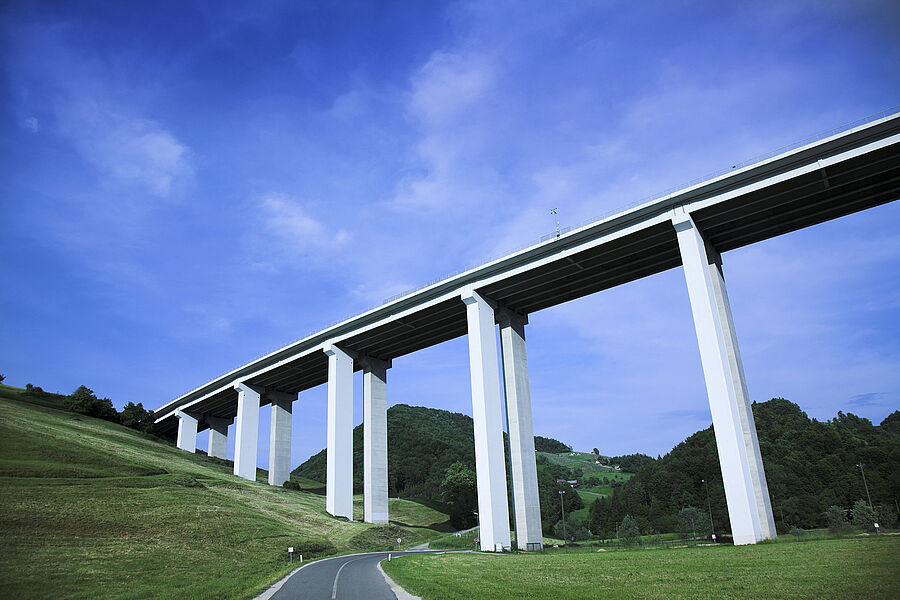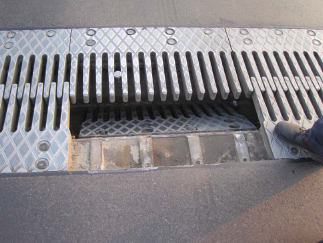Connection area of roadway transition structures - analysis of existing situation and potential for improvement
The connection between expansion joint (EJ) and road surface is a sensible area within the system “Street”, which must fulfil high demands. Tight tolerances exist for the evenness of the surface and the height difference between EJ and surface to prevent damage from snowplows, keep the dynamic impact on the EJ low and ensure high driving comfort. Due to degradation (ruts) the geometric boundary conditions are suspected to change over time, which can lead to a reduced lifetime of the EJ and the connecting area (e.g. snowplow damage, fatigue problems, breakouts). In the past, the connecting area was carried out using different designs (e.g. supporting ribs, concrete sleepers) to ensure durability of the system. Often these different designs as well as the used materials were not regulated, and execution depended on the construction company (e.g. material for supporting ribs). Also, a stiff connecting area can lead to problems due to the direct impact of forces into the EJ itself. The requested geometric tolerances are also often hard to achieve in practice. Another point is the permanent water tightness of the connecting area, which is a basic and crucial requirement for the structure.
To address this problem in the project, a systematic approach was chosen where a detailed assessment of the current situation is used to derive “best-practice” examples as well as proposals for improved designs. To accomplish this, data from the monitoring vehicle “RoadSTAR” is analyzed on a large scale to assess the geometry in the connecting area in combination with detailed inspection of individual structures. Using numerical calculations, the dynamic impact on the EJ and the influence of the geometry on the expected lifetime of EJ is analyzed. Also, existing damages, possibilities for repair, damage causes and correlations with traffic volume are reviewed and physical properties of used materials (supporting ribs, gap sealing) are tested. A Lifecycle Cost Analysis LCCA of the different designs of the connecting area is carried out as well.
Based on this research the results are merged and the structural and economic evaluation presented. In a detailed overview of the current situation on highways as well as on rural roads the current problems are shown, discussed and improved designs for durable connecting areas are proposed. Also, suggestions for future revisions of current guidelines are worked out within the project.
Funded by the Federal Ministry for Climate Protection, Environment, Energy, Mobility, Innovation and Technology (BMK) and the Austrian Research Promotion Agency (FFG) as part of the "Mobility of the Future"/VIF 2017 program.




